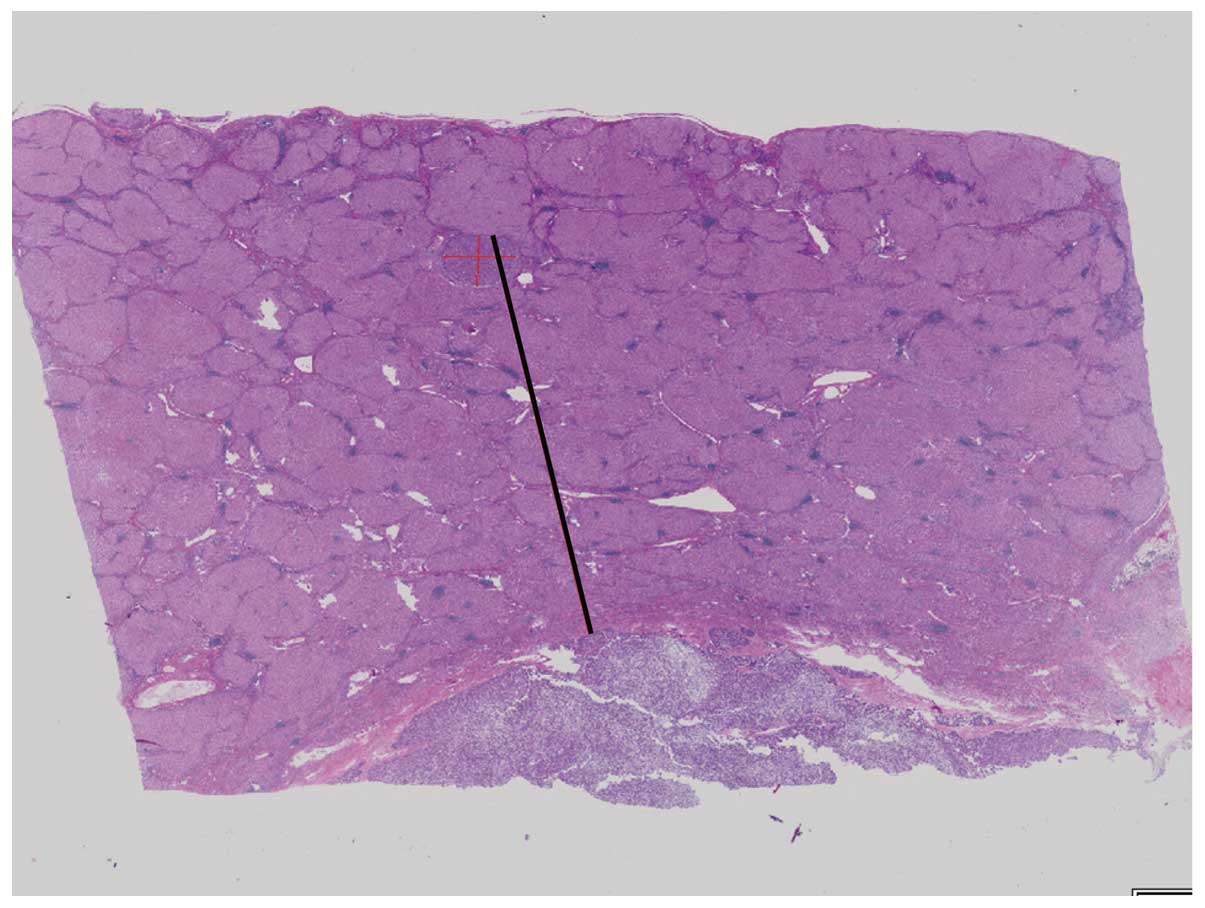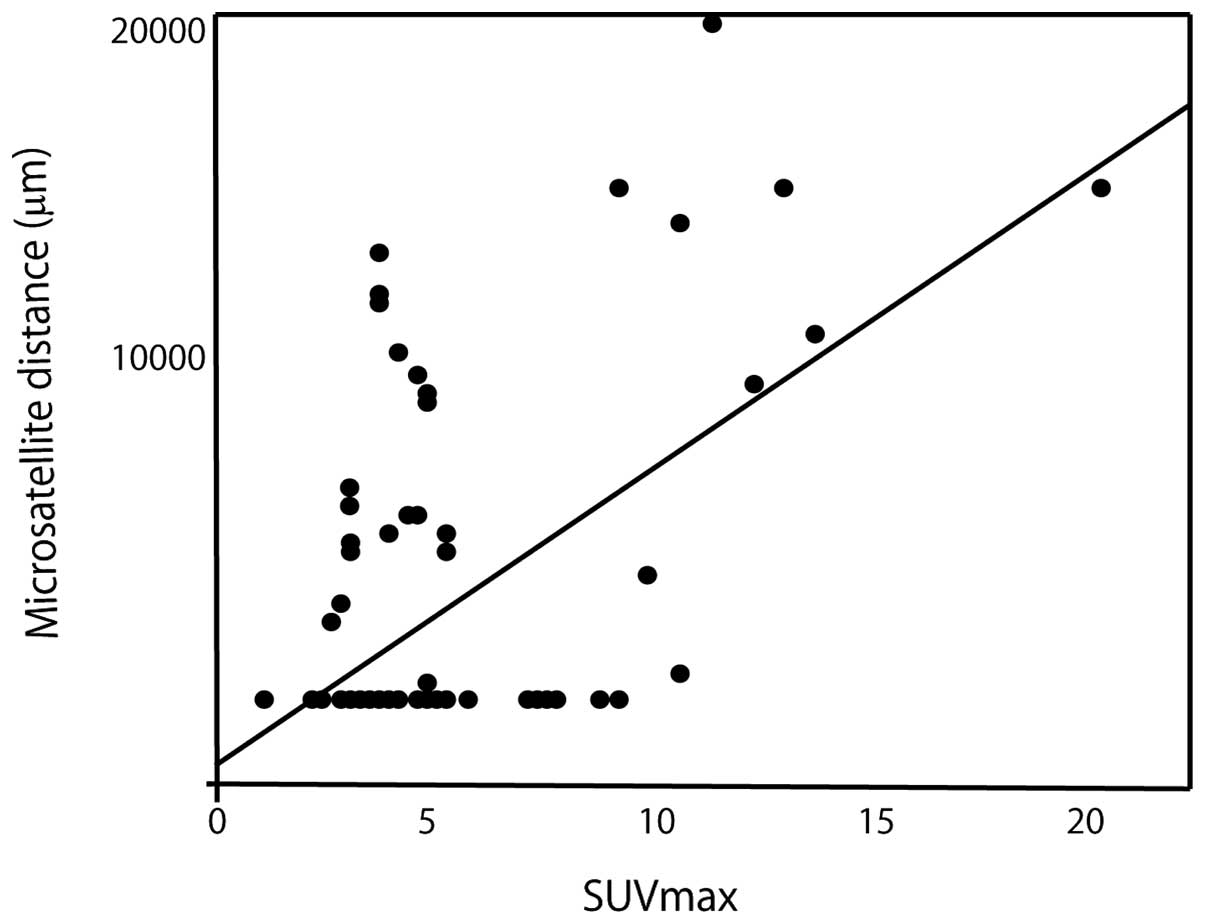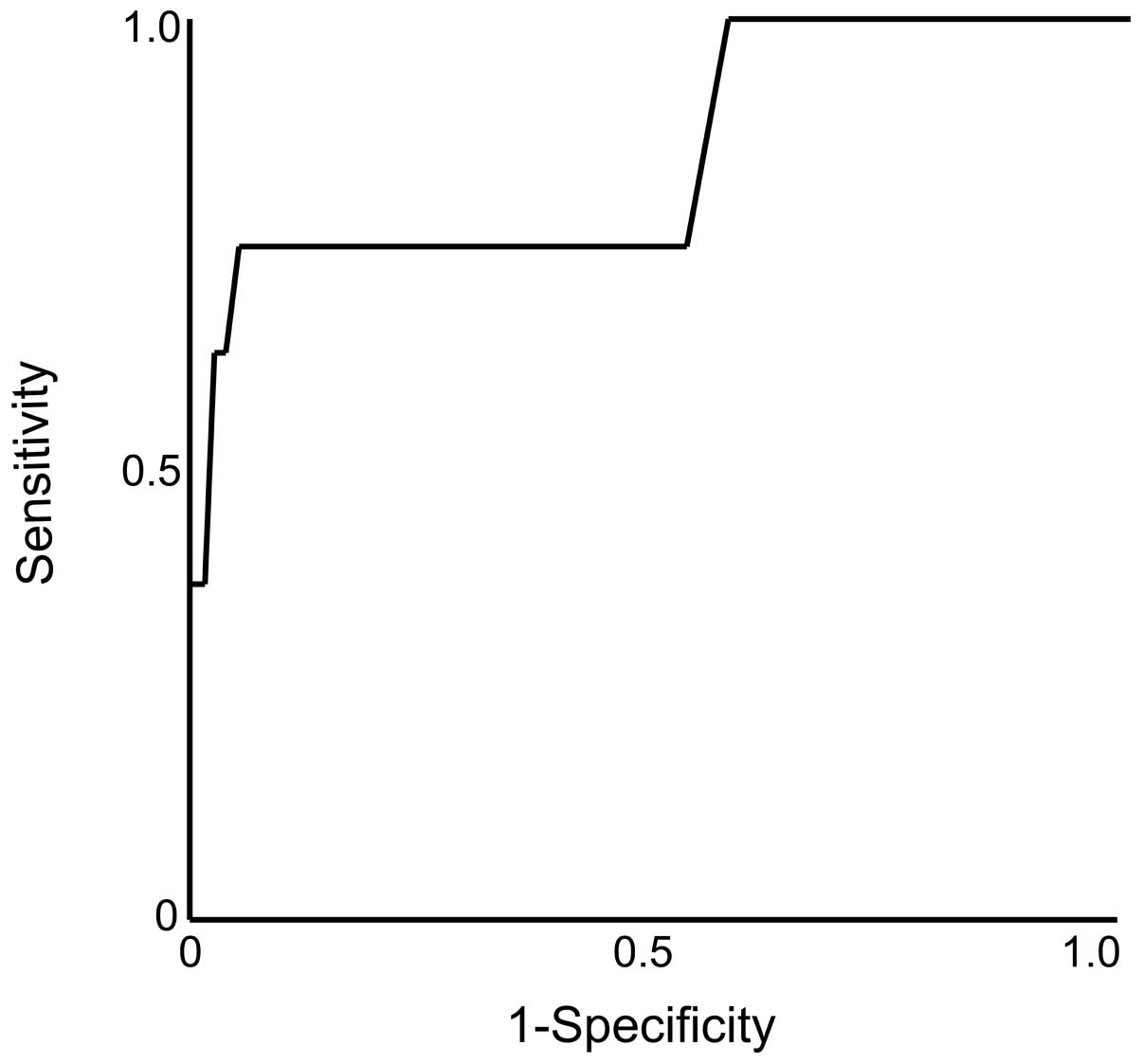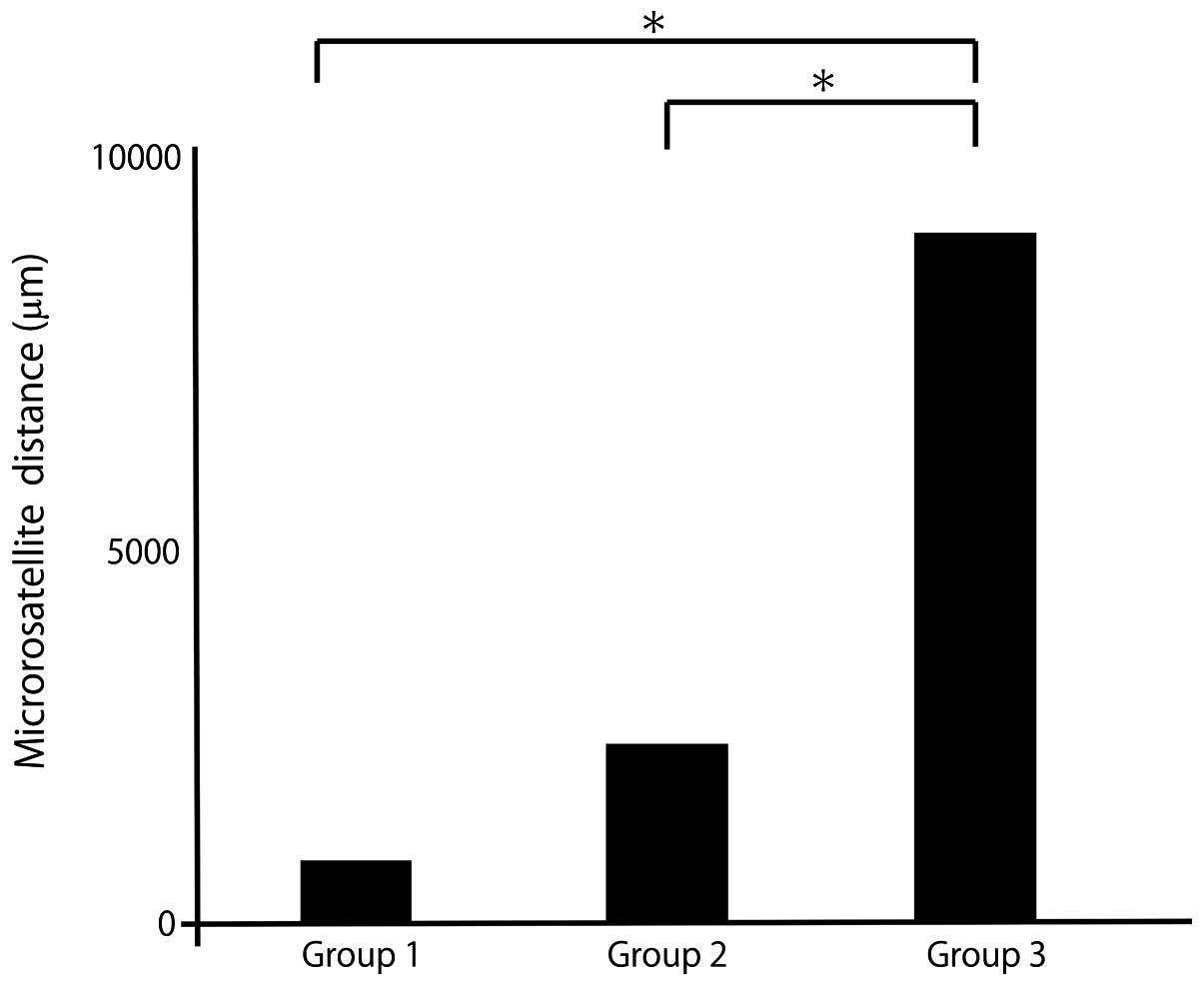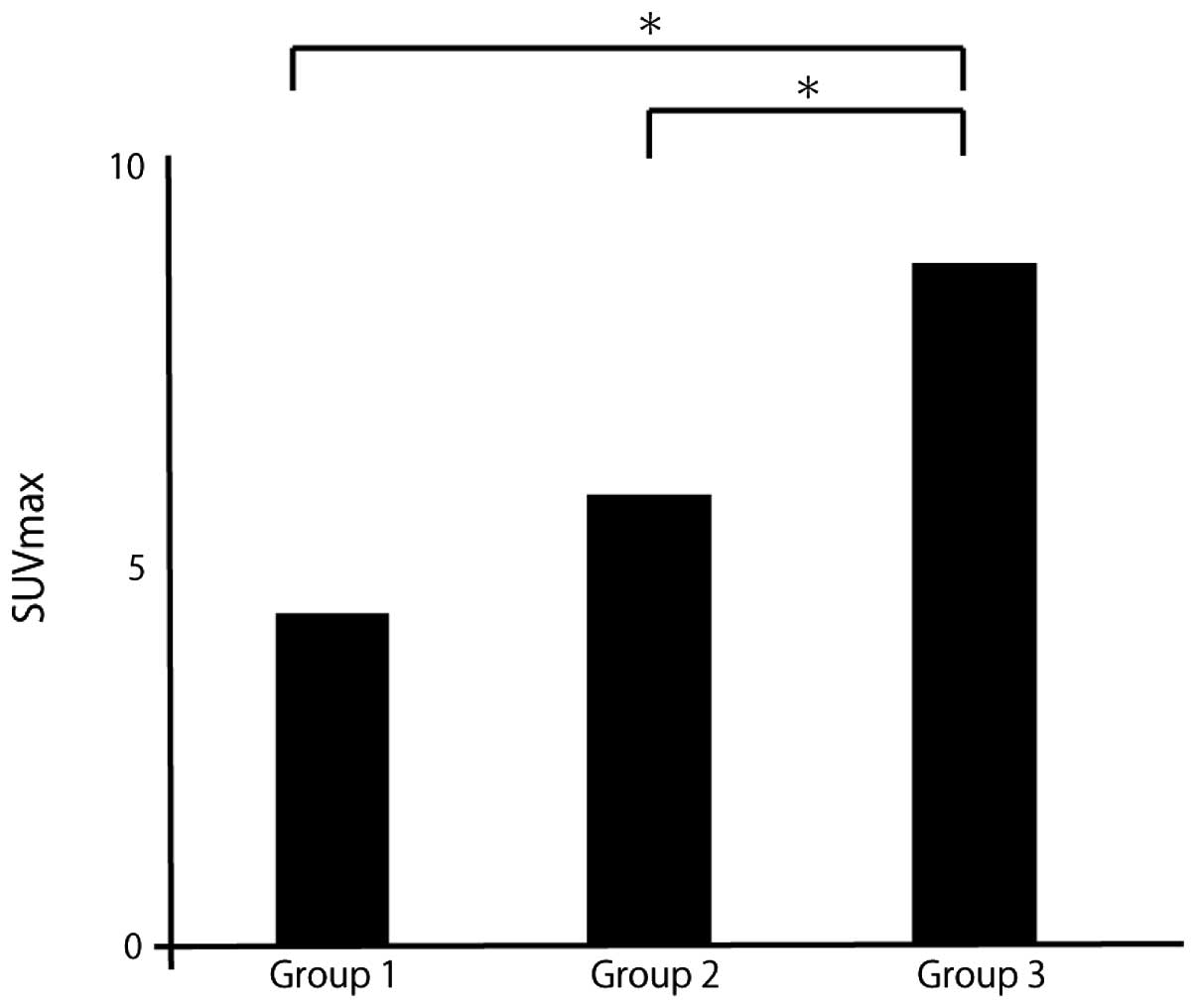|
1
|
Parkin DM, Bray F, Ferlay J and Pisani P:
Global cancer statistics, 2002. CA Cancer J Clin. 55:74–108. 2005.
View Article : Google Scholar
|
|
2
|
Shah SA, Cleary SP, Wei AC, et al:
Recurrence after liver resection for hepatocellular carcinoma: risk
factors, treatment, and outcomes. Surgery. 141:330–339. 2007.
View Article : Google Scholar : PubMed/NCBI
|
|
3
|
Uchino K, Tateishi R, Shiina S, et al:
Hepatocellular carcinoma with extrahepatic metastasis: clinical
features and prognostic factors. Cancer. 117:4475–4483. 2011.
View Article : Google Scholar : PubMed/NCBI
|
|
4
|
Kanda M, Tateishi R, Yoshida H, et al:
Extrahepatic metastasis of hepatocellular carcinoma: incidence and
risk factors. Liver Int. 28:1256–1263. 2008. View Article : Google Scholar : PubMed/NCBI
|
|
5
|
Nagasue N, Uchida M, Makino Y, et al:
Incidence and factors associated with intrahepatic recurrence
following resection of hepatocellular carcinoma. Gastroenterology.
105:488–494. 1993.PubMed/NCBI
|
|
6
|
Miyazaki K, Soyama A, Hidaka M, et al: Ex
vivo hepatic venography for hepatocellular carcinoma in livers
explanted for liver transplantation. World J Surg Oncol. 9:1112011.
View Article : Google Scholar
|
|
7
|
Sasaki A, Kai S, Iwashita Y, Hirano S,
Ohta M and Kitano S: Microsatellite distribution and indication for
locoregional therapy in small hepatocellular carcinoma. Cancer.
103:299–306. 2005. View Article : Google Scholar : PubMed/NCBI
|
|
8
|
Delbeke D, Martin WH, Sandler MP, Chapman
WC, Wright JK Jr and Pinson CW: Evaluation of benign vs. malignant
hepatic lesions with positron emission tomography. Arch Surg.
133:510–515. 1998. View Article : Google Scholar : PubMed/NCBI
|
|
9
|
Iwata Y, Shiomi S, Sasaki N, et al:
Clinical usefulness of positron emission tomography with
fluorine-18-fluorodeoxyglucose in the diagnosis of liver tumors.
Ann Nucl Med. 14:121–126. 2000. View Article : Google Scholar : PubMed/NCBI
|
|
10
|
Lee JW, Paeng JC, Kang KW, et al:
Prediction of tumor recurrence by 18F-FDG PET in liver
transplantation for hepatocellular carcinoma. J Nucl Med.
50:682–687. 2009.PubMed/NCBI
|
|
11
|
Kornberg A, Freesmeyer M, Barthel E, et
al: 18F-FDG-uptake of hepatocellular carcinoma on PET
predicts microvascular tumor invasion in liver transplant patients.
Am J Transplant. 9:592–600. 2009. View Article : Google Scholar
|
|
12
|
Kawaoka T, Aikata H, Takaki S, et al: FDG
positron emission tomography/computed tomography for the detection
of extrahepatic metastases from hepatocellular carcinoma. Hepatol
Res. 39:134–142. 2009. View Article : Google Scholar
|
|
13
|
Teras M, Tolvanen T, Johansson JJ,
Williams JJ and Knuuti J: Performance of the new generation of
whole-body PET/CT scanners: Discovery STE and Discovery VCT. Eur J
Nucl Med Mol Imaging. 34:1683–1692. 2007. View Article : Google Scholar : PubMed/NCBI
|
|
14
|
Kanai T, Hirohashi S, Upton MP, et al:
Pathology of small hepatocellular carcinoma. A proposal for new
gross classification. Cancer. 60:810–819. 1987. View Article : Google Scholar : PubMed/NCBI
|
|
15
|
Adachi E, Maehara S, Tsujita E, et al:
Clinicopathologic risk factors for recurrence after a curative
hepatic resection for hepatocellular carcinoma. Surgery. 131(Suppl
1): S148–S152. 2002. View Article : Google Scholar : PubMed/NCBI
|
|
16
|
Lam CM, Lo CM, Yuen WK, et al: Prolonged
survival in selected patients following surgical resection for
pulmonary metastasis from hepatocellular carcinoma. Br J Surg.
85:1198–1200. 1998. View Article : Google Scholar
|
|
17
|
Shimada K, Sakamoto Y, Esaki M, et al:
Analysis of prognostic factors affecting survival after initial
recurrence and treatment efficacy for recurrence in patients
undergoing potentially curative hepatectomy for hepatocellular
carcinoma. Ann Surg Oncol. 14:2337–2347. 2007. View Article : Google Scholar
|
|
18
|
Yang Y, Nagano H, Ota H, et al: Patterns
and clinicopathologic features of extrahepatic recurrence of
hepatocellular carcinoma after curative resection. Surgery.
141:196–202. 2007. View Article : Google Scholar : PubMed/NCBI
|
|
19
|
Cha C, Fong Y, Jarnagin WR, Blumgart LH
and DeMatteo RP: Predictors and patterns of recurrence after
resection of hepatocellular carcinoma. J Am Coll Surg. 197:753–758.
2003. View Article : Google Scholar : PubMed/NCBI
|
|
20
|
Sumie S, Kuromatsu R, Okuda K, et al:
Microvascular invasion in patients with hepatocellular carcinoma
and its predictable clinicopathological factors. Ann Surg Oncol.
15:1375–1382. 2008. View Article : Google Scholar
|
|
21
|
Hiraoka A, Ochi H, Hidaka S, et al: FDG
positron emission tomography/computed tomography findings for
prediction of early recurrence of hepatocellular carcinoma after
surgical resection. Exp Ther Med. 1:829–832. 2010. View Article : Google Scholar
|
|
22
|
Shiina S, Tateishi R, Arano T, et al:
Radiofrequency ablation for hepatocellular carcinoma: 10-year
outcome and prognostic factors. Am J Gastroenterol. 107:569–577.
2012.PubMed/NCBI
|
|
23
|
Ng KK, Poon RT, Lo CM, et al: Analysis of
recurrence pattern and its influence on survival outcome after
radiofrequency ablation of hepatocellular carcinoma. J Gastrointest
Surg. 12:183–191. 2008. View Article : Google Scholar
|
|
24
|
Uka K, Aikata H, Takaki S, et al: Clinical
features and prognosis of patients with extrahepatic metastases
from hepatocellular carcinoma. World J Gastroenterol. 13:414–420.
2007. View Article : Google Scholar : PubMed/NCBI
|
|
25
|
Natsuizaka M, Omura T, Akaike T, et al:
Clinical features of hepatocellular carcinoma with extrahepatic
metastases. J Gastroenterol Hepatol. 20:1781–1787. 2005. View Article : Google Scholar : PubMed/NCBI
|
|
26
|
Huang GT, Lee HS, Chen CH, et al:
Correlation of E-cadherin expression and recurrence of
hepatocellular carcinoma. Hepatogastroenterology. 46:1923–1927.
1999.PubMed/NCBI
|
|
27
|
Sakon M, Nagano H, Nakamori S, et al:
Intrahepatic recurrences of hepatocellular carcinoma after
hepatectomy: analysis based on tumor hemodynamics. Arch Surg.
137:94–99. 2002. View Article : Google Scholar
|
|
28
|
Amann T, Maegdefrau U, Hartmann A, et al:
GLUT1 expression is increased in hepatocellular carcinoma and
promotes tumorigenesis. Am J Pathol. 174:1544–1552. 2009.
View Article : Google Scholar : PubMed/NCBI
|
|
29
|
Li W, Wei Z, Liu Y, et al: Increased
18F-FDG uptake and expression of Glut1 in the EMT
transformed breast cancer cells induced by TGF-beta. Neoplasma.
57:234–240. 2010.
|















